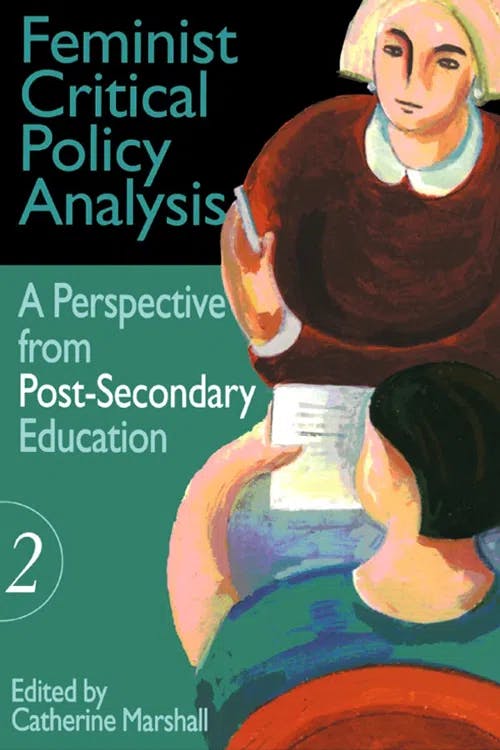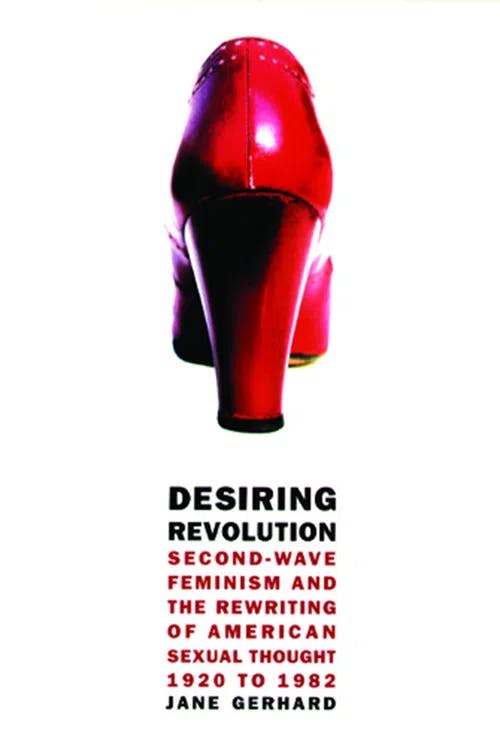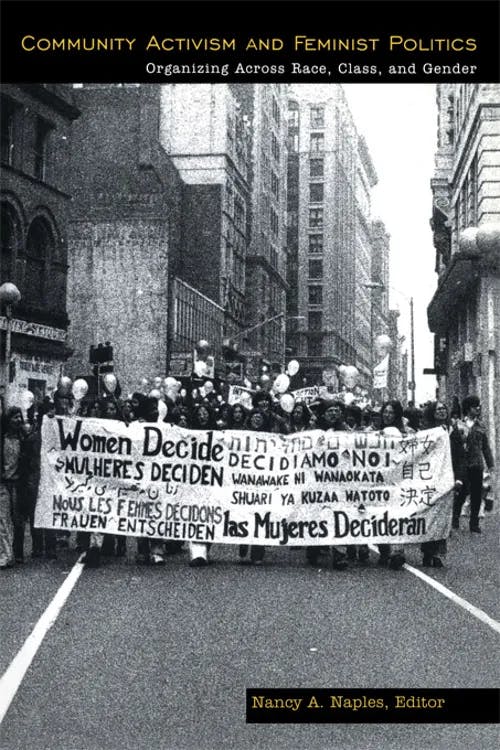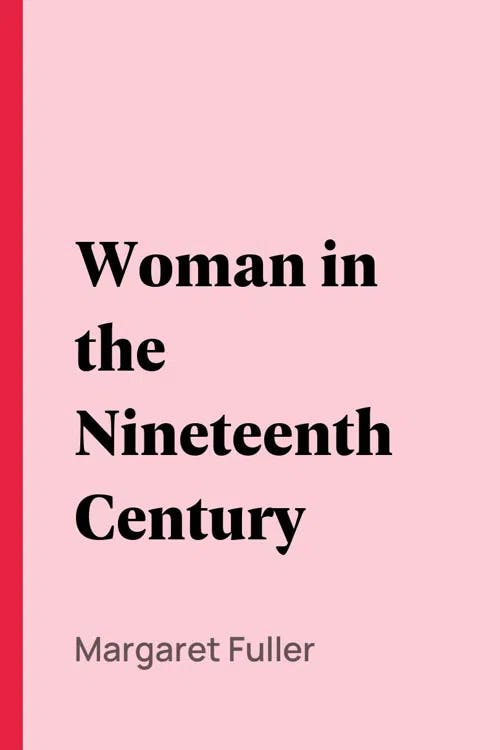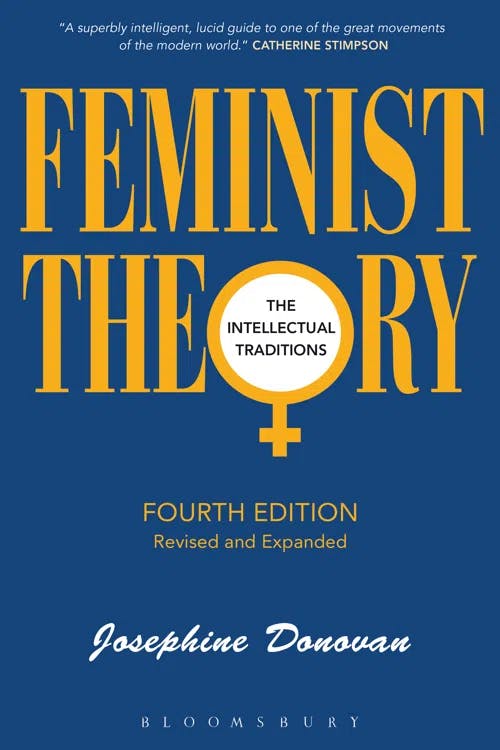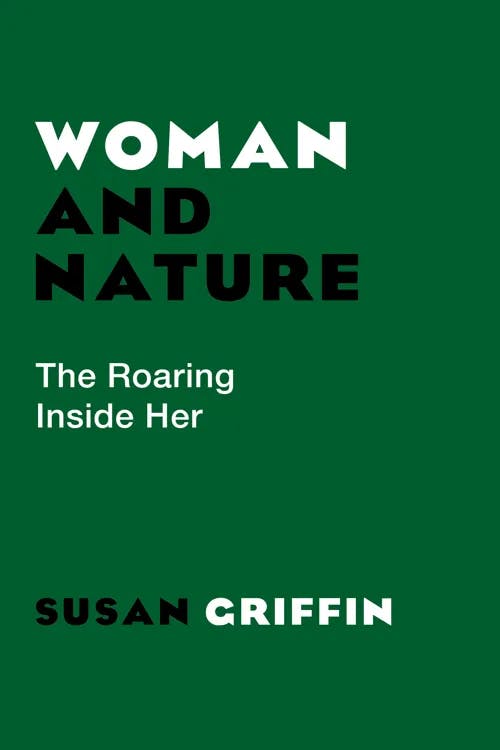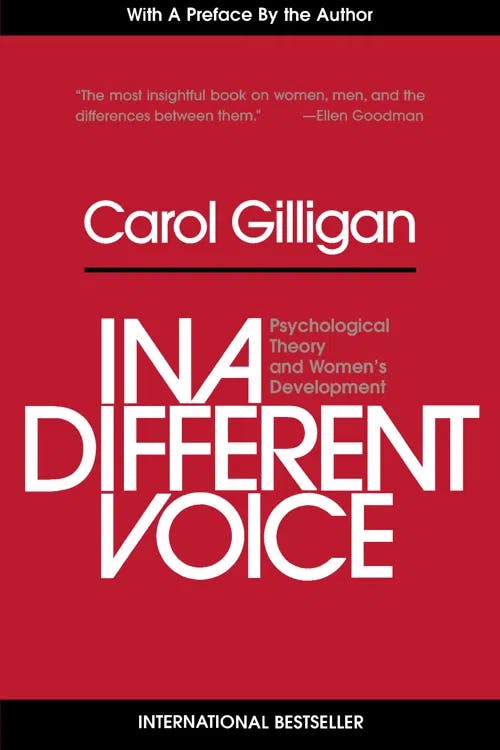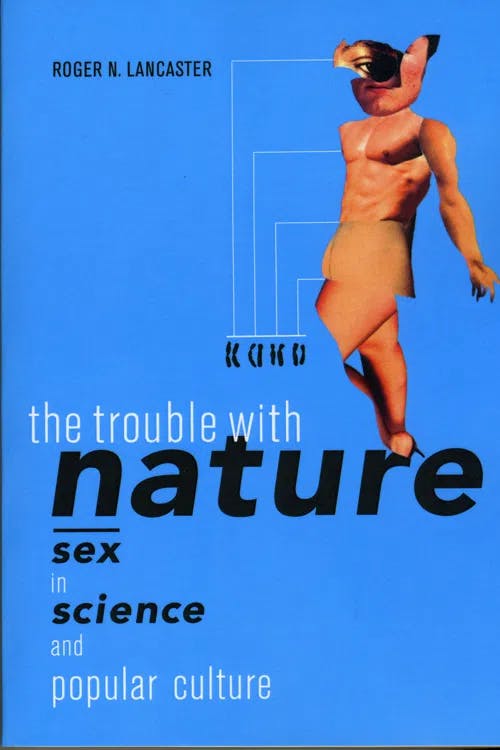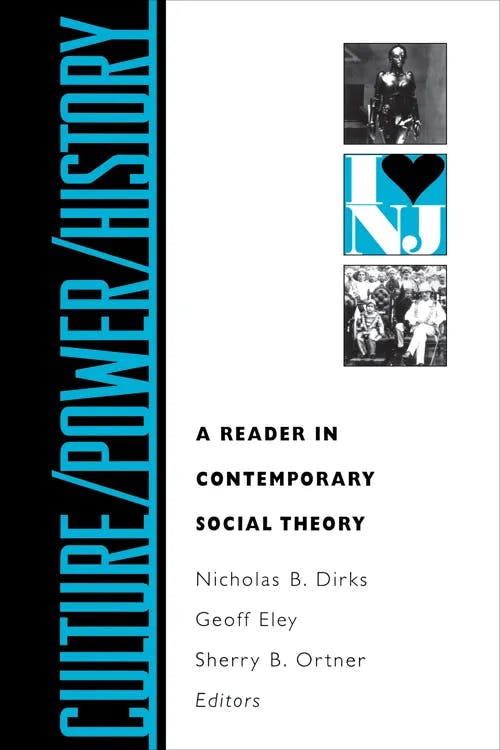What is Cultural Feminism?
PhD, English Literature (Lancaster University)
Date Published: 20.06.2023,
Last Updated: 31.01.2024
Share this article
Definition and origins
Cultural feminism is a branch of feminism that argues there are innate differences between men and women. Some cultural feminists believe that women’s perceived biological or gender differences, or “female essence”, make them, in fact, superior to men in certain ways.
As Estela Mara Bensimon and Catherine Marshall write,
Cultural feminist scholarship comprises works that posit women as different from men because from an early age they are socialized to take on roles associated with the female as mother, caretaker, nurturer, peacemaker, etc. This scholarship posits that women develop differently from men and therefore make judgments and decisions based on principles that give primacy to relationships and that are consistent with an ethic of caring. (2005)
Edited by Catherine Marshall
Cultural feminist scholarship comprises works that posit women as different from men because from an early age they are socialized to take on roles associated with the female as mother, caretaker, nurturer, peacemaker, etc. This scholarship posits that women develop differently from men and therefore make judgments and decisions based on principles that give primacy to relationships and that are consistent with an ethic of caring. (2005)
In this respect, cultural feminism departs from other branches of feminism which have often sought to minimize gender differences. As Jane Gerhard explains,
Cultural feminists productively used the murky status of difference to justify transforming men and society to better fit women. Transforming women who had been stunted by society was no longer the guiding vision of feminism. (2001)
Jane Gerhard
Cultural feminists productively used the murky status of difference to justify transforming men and society to better fit women. Transforming women who had been stunted by society was no longer the guiding vision of feminism. (2001)
Cultural feminists, instead, suggest that gender equality can be achieved through a revaluation of typically female qualities and roles. Let’s take the example of child-rearing, a role traditionally assigned to women. Challenging and overturning conventional roles in the family (woman as mother and homemaker and man as breadwinner) are, for many feminists, a way to try and eradicate gender inequality. Cultural feminists, on the other hand, would approach women’s roles in the family differently. Though cultural feminists acknowledge that women’s nurturing roles are formed by a combination of biological traits and social construction, they argue that the concern for feminists should be to re-evaluate these roles and create a society which places more value on domestic roles. Cultural feminism is more interested in how gender inequality comes about due to a belittling or devaluing of these roles traditionally allocated to women.
As well as redefining these traditional roles, cultural feminists also advocate for the following:
- Valuing childcare as work (a role predominantly occupied by women) and providing salaries so that there is an incentive to remain in the home.
- Respecting traditionally “female” attributes such as nurturing, in order to rebalance a culture that overvalues "male" values of aggression and undervalues “female” values of kindness and gentleness.
- The creation of rape crisis centers and shelters for women.
- An understanding of female sexuality that rejects hierarchies of power.
Connections with radical feminism
Cultural feminism grew out of radical feminism in the 1970s. As Verta Taylor and Leila J. Rupp argue,
The rise of cultural feminism within the U.S. women's movement, according to the current feminist orthodoxy, spelled the death of radical feminism. (“Women's Culture and Lesbian Feminist Activism” in Community Activism and Feminist Politics, 2012)
Edited by Nancy A. Naples
The rise of cultural feminism within the U.S. women's movement, according to the current feminist orthodoxy, spelled the death of radical feminism. (“Women's Culture and Lesbian Feminist Activism” in Community Activism and Feminist Politics, 2012)
In particular, Mary Daly’s work Gyn/Ecology (1979), signifies a crucial move from radical feminism to cultural feminism. The text itself bridges the gap between these two groups of feminists, though its “revalorization of all that is feminine” makes it a highly influential text for cultural feminists (Lucy Sargisson, Contemporary Feminist Utopianism, 2002).
Though cultural feminism as a movement became more fully defined in the 1970s, the philosophy behind it can be traced as far back as Margaret Fuller’s 1843 book Woman in the Nineteenth Century. Here, Fuller espoused ideas around the importance of differentiating between male and female nature:
[...] women must leave off asking [men] and being influenced by them, but retire within themselves, and explore the ground-work of life till they find their peculiar secret. Then, when they come forth again, renovated and baptized, they will know how to turn all dross to gold, and will be rich and free though they live in a hut, tranquil if in a crowd. (1843, [2005])
Margaret Fuller
[...] women must leave off asking [men] and being influenced by them, but retire within themselves, and explore the ground-work of life till they find their peculiar secret. Then, when they come forth again, renovated and baptized, they will know how to turn all dross to gold, and will be rich and free though they live in a hut, tranquil if in a crowd. (1843, [2005])
Rather than aiming to be like men, Fuller argued women should further explore their own femininity and its importance.
Josephine Donovan writes that Fuller’s text
[...] initiated the cultural feminist tradition [...] it stresses the emotional, intuitive side of knowledge and expresses an organic world view that is quite different from the mechanistic view of Enlightenment rationalists. (2012)
Josephine Donovan
[...] initiated the cultural feminist tradition [...] it stresses the emotional, intuitive side of knowledge and expresses an organic world view that is quite different from the mechanistic view of Enlightenment rationalists. (2012)
The connection of women to the natural world, intuition, and emotion, Donovan suggests, is not something to be trivialized. Instead, this new perspective is vital in philosophical thinking and political decision-making.
A woman’s nature
Though cultural feminists may disagree on whether typically “female” traits are biological or culturally constructed, they all highlight that such traits have been typically derided in a patriarchal society. The tendency of male-dominated society to label women as more gentle, nurturing and instinctive has resulted in a discursive link between women and the natural world. This connection to nature is something which is perpetuated by cultural feminists who see this as an intrinsically valuable trait. In one of cultural feminism’s most important texts, Woman and Nature (1978, [2015]), Susan Griffin writes,
We [women] are the bird’s eggs. Bird’s eggs, flowers, butterflies, rabbits, cows, sheep; we are caterpillars; we are leaves of ivy and sprigs of wallflower. We are women. We rise from the wave. We are gazelle and doe, elephant and whale, lilies and roses and peach, we are air, we are flame, we are oyster and pearl, we are girls. We are woman and nature. And he says he cannot hear us speak. But we hear.
Susan Griffin
We [women] are the bird’s eggs. Bird’s eggs, flowers, butterflies, rabbits, cows, sheep; we are caterpillars; we are leaves of ivy and sprigs of wallflower. We are women. We rise from the wave. We are gazelle and doe, elephant and whale, lilies and roses and peach, we are air, we are flame, we are oyster and pearl, we are girls. We are woman and nature. And he says he cannot hear us speak. But we hear.
From this excerpt, it is clear to see the influences on ecofeminism, in particular the work of Ynestra King. King argues that while such connections between women and nature are the product of a male-dominated culture, women can choose whether or not to embrace this and create a new type of culture altogether which values different (and arguably feminine) forms of knowledge (“Healing the Wounds: Feminism, Ecology, and Nature/Culture Dualism” in Gender/body/knowledge, 1989). For a more detailed discussion on cultural feminism’s ties to ecofeminism, see Mary Mellor’s Feminism and Ecology (2013).
This connection between women and nature, cultural feminists argue, is rooted in the notion of women having access to a different (and socially less valuable) type of knowledge which is contrasted with male rationality. Carol Gilligan’s text In a Different Voice (1993), one of the most significant texts dealing with gender differences, explains how cultures view traits such as intelligence through a gendered lens. Gilligan writes,
the qualities deemed necessary for adulthood—the capacity for autonomous thinking, clear decision-making, and responsible action—are those associated with masculinity and considered undesirable as attributes of the feminine self. The stereotypes suggest a splitting of love and work that relegates expressive capacities to women while placing instrumental abilities in the masculine domain. Yet looked at from a different perspective, these stereotypes reflect a conception of adulthood that is itself out of balance, favoring the separateness of the individual self over connection to others, and leaning more toward an autonomous life of work than toward the interdependence of love and care. (1993)
Carol Gilligan
the qualities deemed necessary for adulthood—the capacity for autonomous thinking, clear decision-making, and responsible action—are those associated with masculinity and considered undesirable as attributes of the feminine self. The stereotypes suggest a splitting of love and work that relegates expressive capacities to women while placing instrumental abilities in the masculine domain. Yet looked at from a different perspective, these stereotypes reflect a conception of adulthood that is itself out of balance, favoring the separateness of the individual self over connection to others, and leaning more toward an autonomous life of work than toward the interdependence of love and care. (1993)
In other words, the typically masculine traits of rationality and reason are focused on individual needs. Knowledge in women, Gilligan goes on to explain, has long been “considered ‘intuitive’ or ‘instinctive’” (1993). Gilligan argues that
[...] women’s moral development centers on the elaboration of that knowledge and thus delineates a critical line of psychological development in the lives of both of the sexes. The subject of moral development not only provides the final illustration of the reiterative pattern in the observation and assessment of sex differences in the literature on human development, but also indicates more particularly why the nature and significance of women’s development has been for so long obscured and shrouded in mystery. (1993)
Female intuition, which has long been seen as inferior to rational decision-making, is associated with moral development and an appreciation for other perspectives. For cultural feminists, this type of instinctive, “feminine” knowledge is essential in the public realm as it is more likely to benefit communities rather than individuals.
It is not only instinct and spirituality that is considered a beneficial, yet stereotypically female, trait by cultural feminists; the caregiving and nurturing nature ascribed to women, particularly mothers, has been explored extensively by this branch of feminism. As Gerhard writes,
Cultural feminists [...] hoped both to heal the wounds between competing groups of feminists as well as to transform the experience of mothering into the foundation for a new feminism. The difference that mattered, the difference all women shared, gay and straight, black and white, was the potential to mother. Cultural feminism’s shift to motherhood, then, sought to energize a flagging sisterhood and to generate a positive account of women’s difference from men. (2001)
Adrienne Rich’s Of Woman Born (1976) analyzes how motherhood, a role undervalued in a patriarchal society, is a type of institution created to control women. Rich writes,
[…] the woman at home with children is not believed to be doing serious work; she is just supposed to be acting out of maternal instinct, doing the chores a man would never take on, largely uncritical of the meaning of what she does. So child and mother alike are depreciated, because only grown men and women in the paid labor force are supposed to be “productive.”
The qualities required from a mother as a caregiver are seen to be innate, automatic and, as a result, not worth compensation or acknowledgement. Though cultural feminism here shares much in common with branches of feminism such as Marxist feminism, which sees motherhood as a form of unrecognized labor, it further reappraises the traits of the female caregiver as something which is worthy of recognition.
Critiques of cultural feminism
Cultural feminism’s focus on gender difference has resulted in accusations of essentialism and heteronormative stereotyping. As Taylor and Rupp explain,
Since 1975, denunciations of cultural feminism have become commonplace. From all sides—from socialist feminists, Black feminists, postmodern feminists, and especially from radical feminists who reject cultural feminism as a betrayal of their early ideas—come charges that cultural feminism represents the deradicalization and demobilization of the women's movement. (2012)
One of cultural feminism’s biggest critics, Alice Echols, reiterates this — arguing that this branch of feminism has moved too far from its radical feminist roots. Echols writes,
radical feminism was a political movement dedicated to eliminating the sex-class system, whereas cultural feminism was a countercultural movement aimed at reversing the cultural valuation of the male and the devaluation of the female. (Daring to Be Bad, 1989, [2019])
For Echols, cultural feminism does not proactively contribute to dismantling the patriarchy.
In cultural feminism’s attempts to recognize and revalue the traditional roles women occupy in society, it is often guilty of relying upon outdated stereotypes. Essentialist notions of what constitutes a woman or a man amplify heteronormativity. As Roger N. Lancaster writes,
cultural feminism opens a wide venue for the renewed expression of heteronormative notions in public culture. Its core idea—the notion that women and men are, in their deepest natures, radically different from each other—supports the familiar ideology: men and women as complementary opposites, each necessary but insufficient. In the resulting force field of gender, sexuality, and power, the liberal Hollywood version of sociobiology reflects the feel-good and progressive side of what remains a decidedly heteronormative constellation of meanings and values. (2003)
Roger N. Lancaster
cultural feminism opens a wide venue for the renewed expression of heteronormative notions in public culture. Its core idea—the notion that women and men are, in their deepest natures, radically different from each other—supports the familiar ideology: men and women as complementary opposites, each necessary but insufficient. In the resulting force field of gender, sexuality, and power, the liberal Hollywood version of sociobiology reflects the feel-good and progressive side of what remains a decidedly heteronormative constellation of meanings and values. (2003)
Linda Alcoff explains that such narrow perspectives are not always helpful when trying to understand gender inequality and bias. She writes,
No matter where we turn—to historical documents, philosophical constructions, social scientific statistics, introspection, or daily practices—the mediation of female bodies into constructions of woman is dominated by misogynist discourse. For feminists, who must transcend this discourse, it appears we have nowhere to turn. (Linda Alcoff, “Cultural Feminism versus Post-Structuralism: The Identity Crisis in Feminist Theory” [1988] in Culture/Power/ History, 2021)
Edited by Nicholas B. Dirks, Geoff Eley, and Sherry B. Ortner
No matter where we turn—to historical documents, philosophical constructions, social scientific statistics, introspection, or daily practices—the mediation of female bodies into constructions of woman is dominated by misogynist discourse. For feminists, who must transcend this discourse, it appears we have nowhere to turn. (Linda Alcoff, “Cultural Feminism versus Post-Structuralism: The Identity Crisis in Feminist Theory” [1988] in Culture/Power/ History, 2021)
Alcoff goes on to state that,
The cultural feminist championing of a redefined “womanhood” cannot provide a useful long-range program for a feminist movement and, in fact, places obstacles in the way of developing one. Under conditions of oppression and restrictions on freedom of movement, women, like other oppressed groups, have developed strengths and attributes that should be correctly credited, valued, and promoted. What we should not promote, however, are the restrictive conditions that give rise to those attributes: forced parenting, lack of physical autonomy, dependence for survival on mediation skills, for instance […] To the extent cultural feminism merely valorizes genuinely positive attributes developed under oppression, it cannot map our future long-range course. (2021)
Many traditional female traits and roles which cultural feminism celebrates, such as being a stay-at-home mother or having a sensitive or passive nature, have been created through oppression. A woman’s nurturing and caregiving qualities may have arisen from the pressure and expectation that she behaves a certain way, putting her own needs on hold to cater to her family.
It is not only essentialism which troubles cultural feminism’s critics, but also a lack of consensus as to how such stereotypes are created. Echols explains,
This preoccupation with defining the female sensibility not only leads these feminists to indulge in dangerously erroneous generalizations about women, but to imply that this identity is innate rather than socially constructed. At best, there has been a curiously cavalier disregard for whether these differences are biological or cultural in origin. (“The New Feminism of Yin and Yang” in Powers of Desire, 1983)
If cultural feminism is concerned with revaluing gender stereotypes, as opposed to challenging them, it is understandable that a clearer picture of these root causes needs to be identified.
Further to this, cultural feminism’s heteronormative and essentialist assumptions have often failed to take into account the LGBT+ community. The basic principles underpinning cultural feminism do not take into account homosexual and lesbian relationships or those who are non-binary, for example.
A further critique of cultural feminism is its lack of discussion of racial differences. As Gerhard explains,
cultural feminism remained focused on the differences between men and women more than on the differences between women. In their search for a positive view of woman-as-difference, white cultural feminists continued to marginalize the powerful analysis made by feminists like Lorde, the Combahee River Collective, Barbara Smith, and others about the racism that continued to plague feminism. (2001)
This concern is made evident in Audre Lorde’s “An Open Letter to Mary Daly” (1979). Here, Lorde expresses to prominent cultural feminist Daly that her work Gyn/Ecology (1978) predominantly focuses on white European women. Lorde writes,
As an African-american woman in white patriarchy, I am used to having my archetypal experience distorted and trivialized, but it is terribly painful to feel it being done by a woman whose knowledge so much touches my own. [...] What you excluded from Gyn/Ecology dismissed my heritage and the heritage of all other noneuropean women, and denied the real connections that exist between all of us. (Sister Outsider, 2019)
Despite the apparent homogenizing of all women, cultural feminism fails to account for the experiences of non-white women. As such, generalizations made regarding gendered roles and attributes are not fully representative.
Concluding thoughts
Though cultural feminism as a theory has been dwindling since the 1970s, we can still see its influence within feminist discourses. More and more, feminists are seeking to embrace and re-evaluate feminine traits. In academia, we can see the influences of cultural feminism (particularly the connection between women and nature) in other fields such as ecofeminism. Cultural feminism as a theory in and of itself, however, has largely diminished since its heyday in the late twentieth century. With the move towards intersectional feminism, it is clear to see why cultural feminism has declined in popularity. Indeed, it appears that much of cultural feminism’s assumptions about gender are incompatible with newer forms of feminism which seek to further explore questions of gender constructs and identity with the hope of dismantling, rather than re-evaluating, patriarchal roles.
Further reading on Perlego
Feminism and the Mastery of Nature (2002) by Val Plumwood
From Motherhood to Mothering: The Legacy of Adrienne Rich's Of Woman Born (2012), edited by Andrea O’Reilly
The Mary Daly Reader (2017), edited by by Jennifer Rycenga & Linda Barufaldi
Why Does Patriarchy Persist? (2018) by Carol Gilligan and Naomi Snider
What is cultural feminism in simple terms?
Who are some key cultural feminist thinkers?
What are the main criticisms of cultural feminism?
Bibliography
Alcoff, L. (2021) “Cultural Feminism versus Post-Structuralism: The Identity Crisis in Feminist Theory” in N. B. Dirks, G. Eley, S. B. Ortner (eds) Culture/Power/ History: A Reader in Contemporary Social Theory. Princeton University Press. Available at: https://www.perlego.com/book/2067888/culturepowerhistory-a-reader-in-contemporary-social-theory-pdf
Daly, M. (1979) Gyn/Ecology: The Metaethics of Radical Feminism. Beacon House. Available at: https://www.penguinrandomhouse.com/books/203973/gynecology-by-mary-daly/
Donovan, J. (2012) Feminist Theory. 4th edn. Continuum. Available at: https://www.perlego.com/book/1353641/feminist-theory-fourth-edition-the-intellectual-traditions-pdf
Echols, A. (1983) “The New Feminism of Yin and Yang” in A. Snitow, C. Stansell & S. Thompson (eds) Powers of Desire: The Politics of Sexuality. New Feminist Library. Available at: https://monthlyreview.org/product/powers_of_desire/
Echols, A. (2019) Daring to be Bad: Radical Feminism in America 1967-1975, Thirtieth Anniversary Edition. University of Minnesota Press. Available at: https://www.upress.umn.edu/book-division/books/daring-to-be-bad-1
Fuller, M. (2005) Woman in the Nineteenth Century. Perlego. Available at: https://www.perlego.com/book/1729113/woman-in-the-nineteenth-century-and-kindred-papers-relating-to-the-sphere-condition-and-duties-of-woman-pdf
Gerhard, J. (2001) Desiring Revolution: Second-Wave Feminism and the Rewriting of Twentieth-Century American Sexual Thought. Columbia University Press. Available at: https://www.perlego.com/book/775870/desiring-revolution-secondwave-feminism-and-the-rewriting-of-twentiethcentury-american-sexual-thought-pdf
Gilligan, C. (1993) In a Different Voice: Psychological Theory and Women's Development. Harvard University Press. Available at: https://www.perlego.com/book/1133011/in-a-different-voice-psychological-theory-and-womens-development-psychological-theory-and-womens-development-pdf
Griffin, S. (2015) Woman and Nature: The Roaring Inside Her. Open Road Media. Available at:https://www.perlego.com/book/2430822/woman-and-nature-the-roaring-inside-her-pdf
King, Y. (1989) “Healing the Wounds: Feminism, Ecology, and Nature/Culture Dualism” in Gender/body/knowledge: Feminist Reconstructions of Being and Knowing. Rutgers University Press. Available at: https://www.rutgersuniversitypress.org/genderbodyknowledge/9780813513799
Lancaster, R. N. (2003) The Trouble with Nature: Sex in Science and Popular Culture. University of California Press. Available at: https://www.perlego.com/book/551955/the-trouble-with-nature-pdf
Lorde, A. (2019) Sister Outsider. Penguin. Available at: https://www.penguin.co.uk/books/314706/sister-outsider-by-lorde-audre/9780241410509
Marshall, C. (ed.) (2005) Feminist Critical Policy Analysis II: A Perspective from Post-Secondary Education. Routledge. Available at: https://www.perlego.com/book/1603702/feminist-critical-policy-analysis-ii-pdf
Rich, A. (1976) Of Woman Born: Motherhood as Experience and Institution. W.W. Norton. Available at: https://wwnorton.com/books/9780393541427
Sargisson, L. (2002) Contemporary Feminist Utopianism. Routledge. Available at: https://www.perlego.com/book/1618572/contemporary-feminist-utopianism-pdf
Taylor, V. & L. J. Rupp. (2012) “Women's Culture and Lesbian Feminist Activism” in Community Activism and Feminist Politics: Organizing Across Race, Class, and Gender. Routledge. Available at: https://www.perlego.com/book/1613405/community-activism-and-feminist-politics-organizing-across-race-class-and-gender-pdf
PhD, English Literature (Lancaster University)
Sophie Raine has a PhD from Lancaster University. Her work focuses on penny dreadfuls and urban spaces. Her previous publications have been featured in VPFA (2019; 2022) and the Palgrave Handbook for Steam Age Gothic (2021) and her co-edited collection Penny Dreadfuls and the Gothic was released in 2023 with University of Wales Press.

